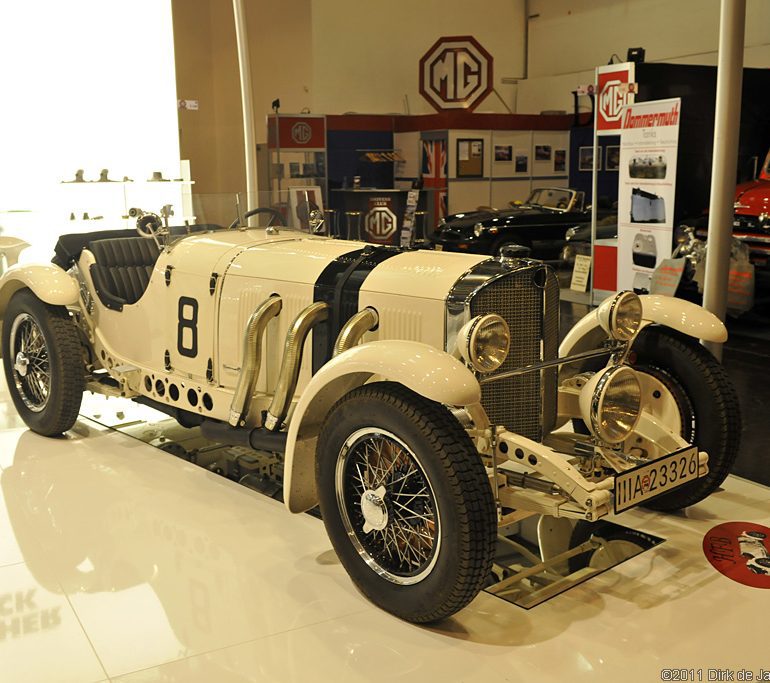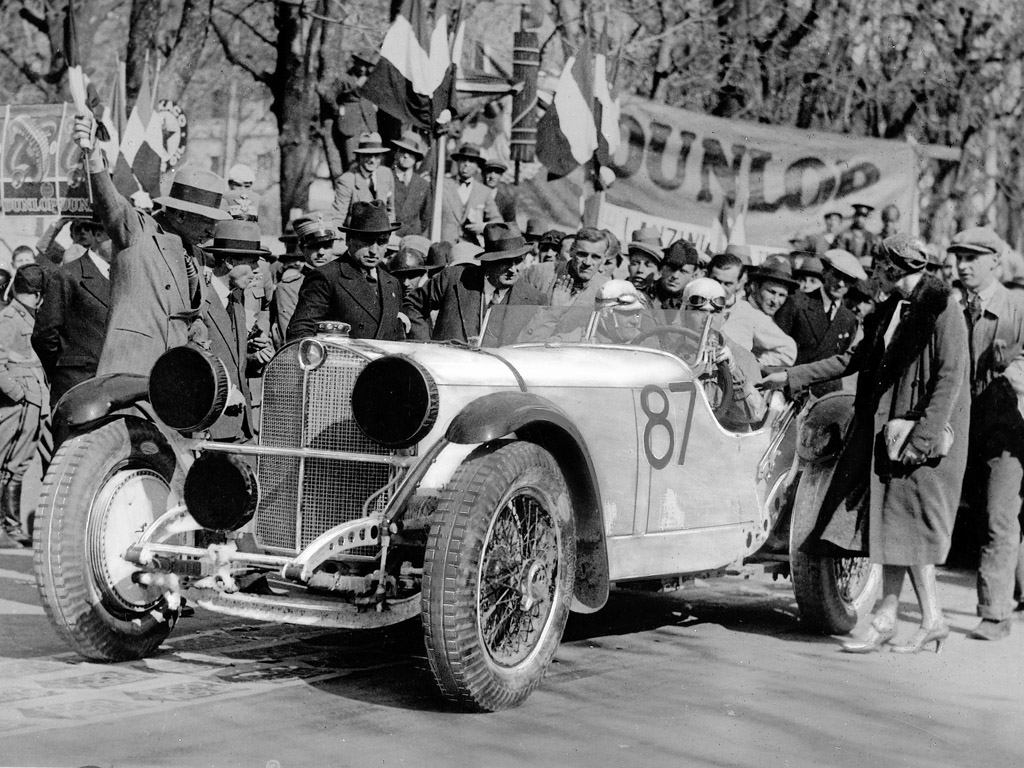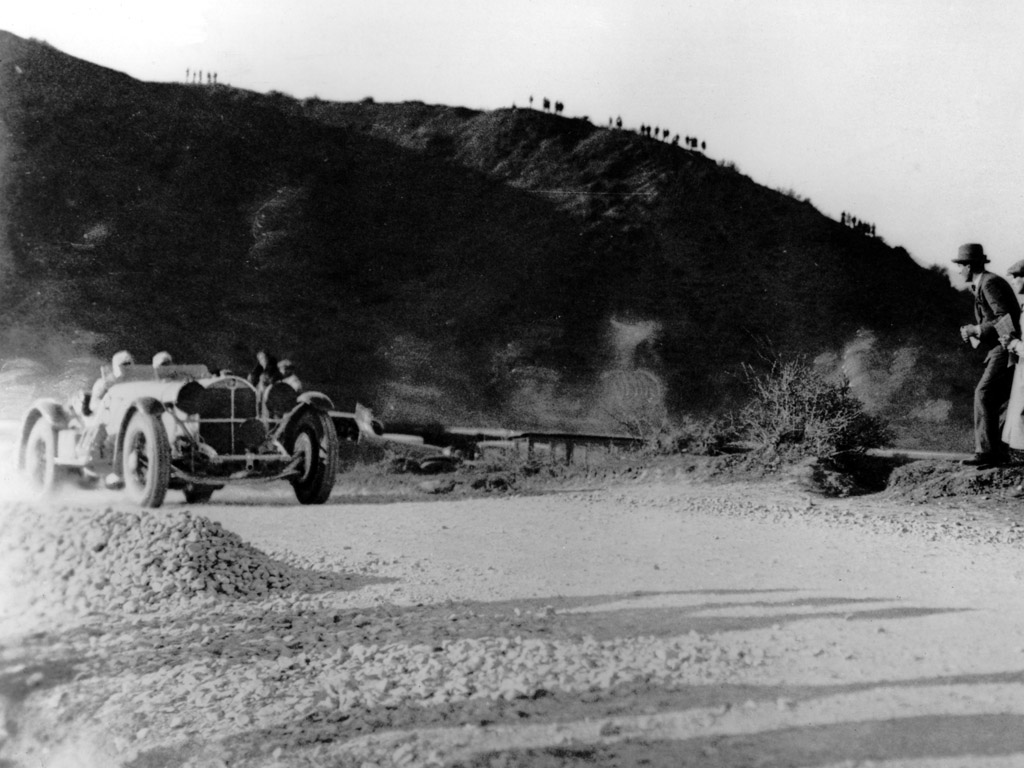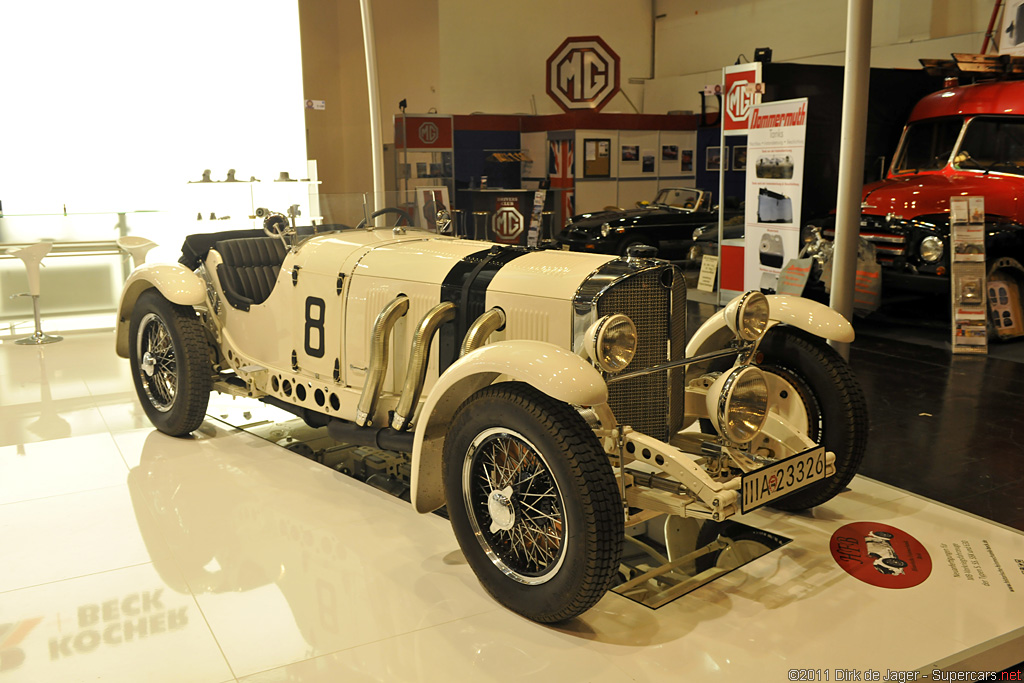1931 Mercedes-Benz 720 SSKL
Rudolf Caracciola was the first foreign driver to win the famous Italian ‘Mille Miglia’ road race. He and co-driver Wilhelm Sebastian completed the 1,635 kilometers at an average speed of 101.1 km/h driving a Mercedes-Benz SSKL (W 06 RS series) on April 12/13, 1931.
The Mercedes supercharged vehicles first took shape in the design offices of Daimler-Motoren-Gesellschaft (DMG) in the early 1920s – in other words before the merger with Benz & Cie. Their development was driven by Gottlieb Daimler’s son Paul, who had taken over as technical director upon the retirement of Wilhelm Maybach from DMG in 1907 and was now also a Member of the Board of Management. The company had plenty of experience with mechanical supercharging, since aero engines and submarine assemblies had for some time been using superchargers to boost output.
The first racing car to feature a 1.5-liter supercharged engine was the 6/40/65 hp model, raced at the 1922 Targa Florio in Sicily and, piloted by works driver Paul Scheef, who finished a respectable third. The next generation of Mercedes-Benz sports cars was the K, S, SS, SSK and SSKL models. Unlike their thoroughbred racing predecessors, these new cars were designed as sporty road vehicles. Between 1926 and 1933 these vehicles – popularly known as White Elephants and fitted with a supercharged six-cylinder engine – were without equal either on the road or on the race track. For many well-heeled gentleman-drivers these cars were the ideal instruments with which to try their strength at the various racing events. More so in those days than now, perhaps, such races were extremely important occasions on the social calendar.
The development culminated in the SSKL model, driven by Caracciola at the Mille Miglia in April 1931. It was based on the SSK, which had a short wheelbase and was therefore light and maneuverable. The SSKL was even lighter – hence the L in the model designation – and weighed approximately 1,350 kilograms. That was not particularly heavy for a supercharged six-cylinder engine with a displacement of 7,065 cubic centimeters and an output of 300 hp. Top speed was an impressive 235 km/h. The final evolutionary stage of the widely respected SSKL lined up for the 1932 AVUS race in Berlin. Private driver Manfred von Brauchitsch had the car fitted with a streamlined body and took first place with an average speed of 194.2 km/h.
Story by Mercedes-Benz
In Detail
| submitted by | Richard Owen |
| engine | Aluminum M06 RS Straight 6 |
| position | Front Longitudinal |
| aspiration | Roots-Type Supercharger |
| valvetrain | SOHC 2 Valves per Cyl |
| displacement | 7069 cc / 431.4 in³ |
| bore | 100 mm / 3.94 in |
| stroke | 150 mm / 5.91 in |
| power | 223.7 kw / 300 bhp @ 4000 rpm |
| specific output | 25.05 bhp per litre |
| bhp/weight | 200.0 bhp per tonne |
| torque | 689 nm / 508.2 ft lbs @ 2000 rpm |
| body / frame | Aluminum over Steel Ladder-Type Frame |
| driven wheels | RWD |
| front brakes | Drums |
| f brake size | mm / in |
| rear brakes | Drums |
| r brake size | mm / in |
| steering | Worm & Nut |
| f suspension | Rigid axle w/Semi-Elliptic Leaf Springs, Friction Dampers |
| r suspension | Underslung Rigid axle w/Semi-Elliptic Leaf Springs, Friction Dampers |
| curb weight | 1500 kg / 3307 lbs |
| transmission | 4-Speed Manual; |
| gear ratios | :1 |
| top speed | ~235 kph / 146.0 mph |







